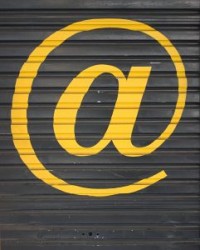When asked why he robbed banks, Willie Sutton famously replied, ‘That’s where the money is.”
Direct marketers have been saying essentially the same thing for years. “The money is in the list.” For a while, many on the internet (including me, I’m embarrassed to say) got caught up in RSS feeds and subscriber numbers. Wrong.
The money is in the list
Turns out that your email list is more profitable than your RSS feed. And, since Google shut down its RSS reader, and WordPress updates broke RSS plugins, it’s getting harder to even retrieve an RSS feed.
People who are willing to let you into their mailbox trust you more than those who check your RSS feed. And that trust will eventually translate regular readers, followers. and subscribers into buyers.
Email has the best ROI
Campaign Monitor reports that email earns $38 for every dollar spent. It’s far more effective than Facebook or Twitter too. Not to mention that you can target your audience more effectively, break it up into segments, and even split test headlines or other message components to see what’s most effective.
Talk to the right people
You can run ads on TV on all day about your pig chow, but if the ads are only seen by people who live in large cities, your sales will be dismal. The same thing will happen if you try to convince a web developer to buy heavy duty shipping supplies and packaging. Wrong audience=lousy results.
Know your tribe
Who are your fish? What kind of people need what you offer? What drives them nuts? Are you solving a problem they have? Or is your product a solution without a problem? Market to those people (and only those people). Farmers whose pigs have poor appetites (is there such a thing?).
Choose wisely
If you run an ad, rent a list, post on Facebook, or use Google – choose wisely. The cheapest option isn’t the best option. The best option is the one with people who most closely fit your tribe, your ideal customer, and the people (or businesses) with a problem that your product or service solves.
Just don’t rob any banks. They don’t like it.




